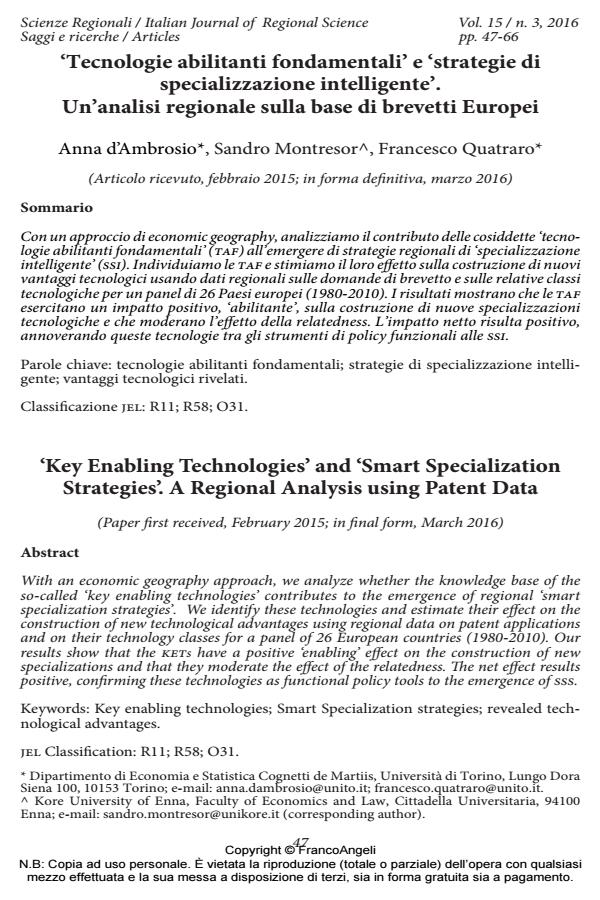"Key Enabling Technologies" and "Smart Specialization Strategies". A Regional Analysis using Patent Data
Journal title SCIENZE REGIONALI
Author/s Anna D'Ambrosio, Sandro Montresor, Francesco Quatraro
Publishing Year 2016 Issue 2016/3
Language Italian Pages 19 P. 47-65 File size 289 KB
DOI 10.3280/SCRE2016-003003
DOI is like a bar code for intellectual property: to have more infomation
click here
Below, you can see the article first page
If you want to buy this article in PDF format, you can do it, following the instructions to buy download credits

FrancoAngeli is member of Publishers International Linking Association, Inc (PILA), a not-for-profit association which run the CrossRef service enabling links to and from online scholarly content.
With an economic geography approach, we analyze whether the knowledge base of the so-called ‘key enabling technologies’ contributes to the emergence of regional ‘smart specialization strategies’. We identify these technologies and estimate their effect on the construction of new technological advantages using regional data on patent applications and on their technology classes for a panel of 26 European countries (1980-2010). Our results show that the kets have a positive ‘enabling’ effect on the construction of new specializations and that they moderate the effect of the relatedness. The net effect results positive, confirming these technologies as functional policy tools to the emergence of sss.
Keywords: Key enabling technologies; Smart Specialization strategies; revealed technological advantages.
Jel codes: R11; R58; O31
Anna D'Ambrosio, Sandro Montresor, Francesco Quatraro, ‘Tecnologie abilitanti fondamentali’ e ‘strategie di specializzazione intelligente’. Un’analisi regionale sulla base di brevetti Europei in "SCIENZE REGIONALI " 3/2016, pp 47-65, DOI: 10.3280/SCRE2016-003003